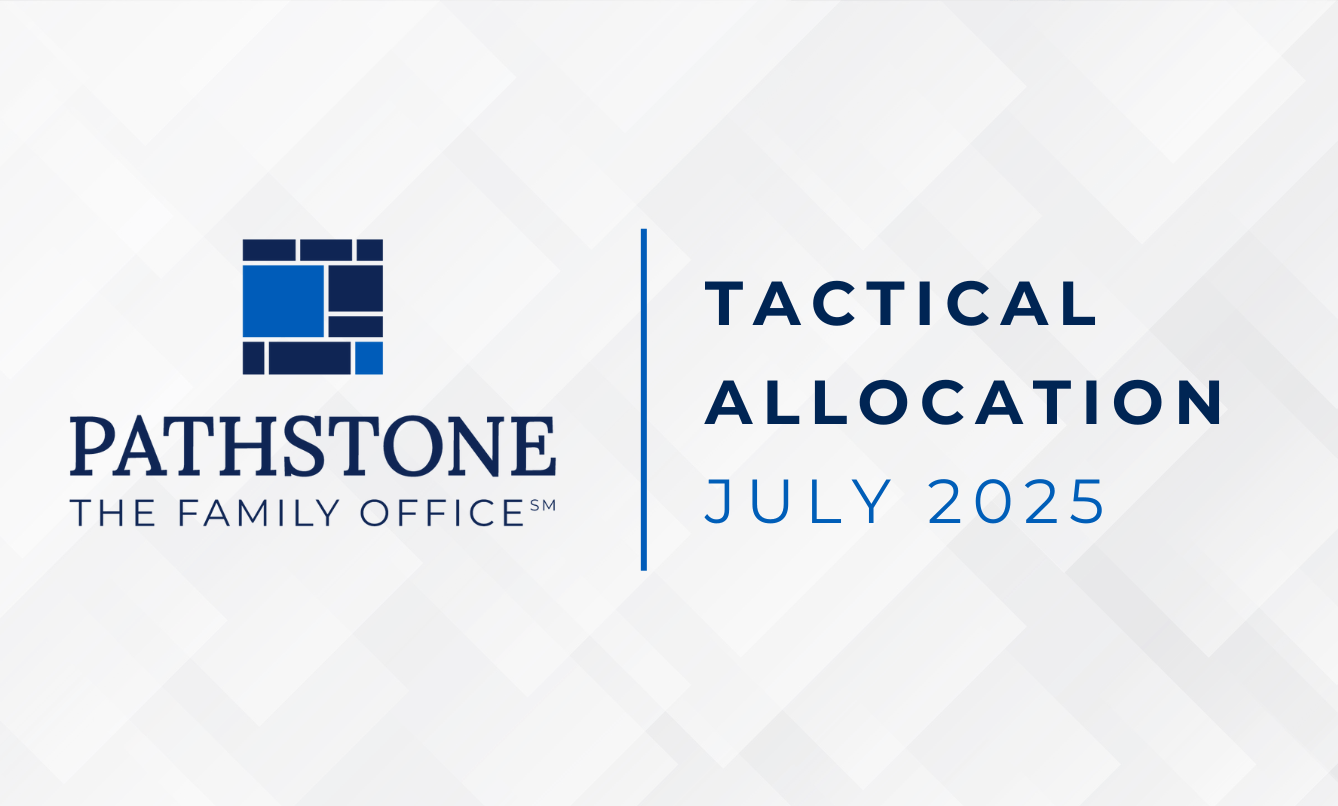At Pathstone, we are always looking ahead to potential economic, legislative, and regulatory changes that could impact our clients. Over the past two years it has grown increasingly challenging to plan, under the threat of significant near-term adverse income and transfer tax legislation. The passage of the 2022 Inflation Reduction Act, which excluded almost all previously proposed individual tax provisions, and the outcome of the 2022 mid-term elections, which will seat a divided 118th Congress, means significant tax changes affecting 2022 and 2023 are now likely off the table. While smaller bipartisan and special interest focused tax changes remain possible, we feel confident that the planning environment has normalized and that we won’t see another major catalyst for tax policy change until the 2024 general elections. Accordingly, the following outlines current law and provides a framework of considerations and opportunities to explore as part of traditional year-end planning. As always, please engage your Pathstone advisory team to help assess opportunities and their potential application and appropriateness to your family’s unique planning situation.
Income Tax Overview
Having survived multiple legislative proposals to roll back many of the taxpayer-friendly changes of the Tax Cuts and Jobs Act of 2017, tax rates and deduction structures for 2022 mirror those of 2021 but for modest inflation adjustments and expiring temporary COVID-related tax relief measures:
- Top marginal ordinary income tax rate remains at 37% (sunsetting to 39.6% in 2026).
- Graduated long-term capital gain tax brackets of 0%, 15%, and 20%.
- 3.8% Net Investment Income Tax (NIIT) on investment income of higher-income investors.
- Alternative Minimum Tax (AMT) applies to fewer people due to higher exemptions, higher phase-out levels, the $10,000 cap on state and local tax deductions, and the disallowance of miscellaneous itemized deductions.
- Standard deduction is $12,950 (single) and $25,900 (married filing jointly) for 2022.
- Corporate tax rate is 21%, and pass-through businesses still enjoy a 20% Qualified Business Income (QBI) deduction.
- QBI deduction begins to phase out at taxable income of $170,050 (single) / $340,100 (married filing jointly) for 2022. It is fully phased out for owners with >$440,100 (married filing jointly).
Income Tax Planning Considerations
Deferring income and accelerating deductions continues to be the foundation of year-end income tax planning. Whether you should defer or accelerate income and deductions between 2022 and 2023 depends to a great extent on your projected marginal (highest) tax rate for each year. Consider the following:
- Develop a multi-year approach to quantify the effect of your current and future tax liability. This is particularly relevant for charitable planning as bunching multi-year contributions into a single tax year might help maximize itemized deductions. Utilizing a Donor Advised Fund can be very useful for this purpose.
- While cash contributions enjoy higher deductibility thresholds (up to 60% of AGI in 2022-23), gifts of appreciated marketable securities (limited to only 30% of AGI) may still enhance tax benefits as the unrealized capital gain is never taxed.
- IRA account owners aged 70½+ should consider Qualified Charitable Distributions (QCDs) of up to $100,000 annually, which can be distributed directly to charity and never be subject to ordinary income tax.
- All charitable contributions, regardless of size, must be properly documented and substantiated to claim the deduction.
- With no immediate tax rate increases on the horizon, consider accelerating 2022 capital gains only when coordinated with broader loss-harvest, multi-year income smoothing, or other prudent portfolio rebalancing/risk mitigation strategies.
- Consider reinvesting eligible 2022 capital gains into Qualified Opportunity Zone Funds to defer tax until 2026 and eliminate future tax if held more than 10 years.
- Weigh the benefits of whole or partial Roth IRA conversions. Temporarily depressed asset valuations or opportunistically ‘filling up’ lower graduated tax brackets can provide longer-term tax savings.
- Temporarily depressed market valuations present loss harvesting and potentially attractive compensatory option exercise opportunities.
- Maximize contributions to tax-deferred retirement plans, SEP IRAs (if you are self-employed), and Health Savings Accounts (HSAs) including catch-up contributions for those over age 50.
- Pay year-end accrued margin or other deductible investment interest expenses.
- For existing discretionary family trusts, explore making trust distributions to optimize lower individual beneficiary tax rates.
- For closely held businesses, consider year-end compensation and distribution policies (may be beneficial to retain more corporate income given lower rates) and explore bonus depreciation and expensing opportunities on necessary purchases.
- Administer annual required trust or retirement account distributions and other required formalities of family business, estate planning, and charitable planning entities. The IRS has taken an increasingly hostile view towards improper entity documentation and administration.
Transfer Tax Overview
- The Estate, Gift, and Generation Skipping Transfer Tax (GST) exemption is $12,060,000 per person (inflation adjusting to $12,920,000 in 2023).
- The annual gift exclusion is $16,000 (inflation adjusting to $17,000 in 2023).
- The current law sunsets 1/1/2026, when these historically high exemption levels return to roughly $6.5 million per person, or half the current amount.
- Whether by 2026 sunset or more accelerated adverse legislation, transfer tax change appears imminent, making lifetime exemption planning a “use it or lose it” proposition for gifts greater than the target sunset exemption level.
Transfer Tax Planning Considerations
Pathstone continues to recommend clients make lifetime gifts now if they have both legacy planning goals and gifting capacity. There is little downside in locking in the current higher exemptions, even if the law remains status quo and does not sunset in 2026. It is always beneficial to transfer appreciating assets out of large, potentially taxable estates. Consider transfer tax planning opportunities in the following order:
- First, consider this an opportunity to potentially enhance, finalize, or even “clean up” prior planning.
- Forgive inter-family loans or mortgages.
- Equalize prior lifetime gifts among family lines (where desired).
- Divest senior generation of equity or voting interests in family business entities such as FLP/LLC/S-Corps.
- Infuse premiums into existing Irrevocable Life Insurance Trusts or terminate existing split-dollar or other life insurance funding arrangements.
- Accelerate or complete 529 plan funding using lifetime exemption (if frontloading with annual exclusion gifts, consider waiting until 2023 when exclusion increases to $17,000).
- Allocate GST tax exemption to existing non-exempt trusts (where appropriate).
- Second, consider whether more substantial gifts or wealth transfers are desired and feasible.
- Re-examine wealth transfer objectives and financial impact of accelerating charitable and family gifts.
- Based on comfort level, assess whether outright gifts vs. transfers in trust or other family entities might be more appropriate.
- Third, lock in remaining elevated exemptions utilizing flexible planning entities intentionally designed to adapt to multi-generational family needs and the changing legislative environment.
- Utilize Grantor Trusts to amplify planning benefits through grantor’s ability to continue paying trust income taxes.
- Establish trusts in jurisdictions allowing long or perpetual durations (Dynastic Trusts) and with favorable state tax regimes.
- Consider including spousal and charitable discretionary beneficiaries to maximize flexibility.
- Include special trustees, trust protectors, powers of appointment, and modification language.
- Note that many state transfer tax laws do not conform to federal law, so close coordination with your local advisors and tax counsel is essential.
- Make annual exclusion gifts ($16,000 per person per beneficiary) by year-end. Also, consider direct payments for medical and tuition expenses for children and grandchildren as these payments are nontaxable and do not consume exemptions.
- Even with interest rates moving higher, it may still be advantageous to implement several planning techniques like intra-family loans, Grantor Retained Annuity Trusts, Installment Sales to Defective Grantor Trusts, and Charitable Lead or Remainder Trusts.
- Review beneficiary designations of retirement plans, particularly where trusts are named, as many changes and complexities were created by the 2019 SECURE Act and subsequent regulations.
- Review existing wealth transfer planning structures – considering inflation and market volatility – to assess whether modification might be prudent and beneficial.
- The holidays are an opportune time to reflect on and communicate planning goals and conduct annual family and family entity meetings. Activities may include financial reviews, educational activities, officer elections, appointment of committees, and ratification of actions for the coming or prior year.
As you and your family celebrate the holidays and look forward to 2023, we encourage you to work with your Pathstone team, attorney, and tax advisors to further explore these issues and opportunities considering your unique tax situation.
PLease see PDF for important disclosures.







